Part 3: SOUTHERN FRENCH CONNECTION: ART, FOOD and WINE
In Part 2, the journey took us to Figueres, Spain to explore Surrealist Salvadore Dali’s Theatre-Museum, to the seaside city of Collioure immortalized by paintings of André Derain, Henri Matisse and Pablo Picasso, and to the quiet beauty of Perpignan.
CANAL DU MIDI, AVIGNON and ARLES
On our way to stay in Arles and to visit Avignon, we paused for a morning excursion on the famed Canal du Midi.
CANAL DU MIDI
The slow steady pace of cruising down the 150-mile-long 17th century-constructed Canal du Midi in a flat-bottomed barge was one of the most relaxing aspects of the two-week Odysseys Unlimited tour thus far. Originally named the Canal Royal en Languedoc in 1681 when completed by Pierre-Paul Riquet, it was renamed by French revolutionaries to Canal
du Midi in 1789. The UNESCO site, which connects the waterways of the Mediterranean to the Atlantic, is one of Europe’s oldest operational canals, with as many as 8,000 boats riding the still waters each season. Our group of 18 tour members were on a two-hour guided tour aboard a private chartered barge named the Saint-Ferréol , but boats can be rented for two to 12 people, for a few hours or a week. The canal contains fresh water fish. The bottom is dirt so when boats cruise through the narrow passage at even four knots an hour, the dirt roils the water an army green. We languidly passed barren spots of the pastoral landscape, where fungus-infected trees had been razed and in the next moments, we spotted a plethora of bright wildflowers blanketing the flattened ground. We slowed for the electric-driven locks, first built in the 15th century. It took about 5 minutes for the 1000 gallons to bring us up to the top of the water.
Where we ate and drank:
We worked up an appetite on the Canal, so how fabulous that a short walk across the canal’s bridge brought us to En Bonne Compagnie in Homps for an exquisite lunch. Although we were choosing from a group menu, this food was so delicious I can’t imagine any dish not being as divine. My husband Russ and I both chose the twice-baked Combebelle Goat Cheese Souffle with red onion marmalade as our appetizer instead of the smoked haddock Branade (cod) cake with lime yogurt dressing. (Everyone who ate that was as pleased with their choice.) The pillow-soft creamy texture and delicate flavor was mouth-watering appealing, but the portion was too large for either of us to finish knowing more food was coming. Russ couldn’t eat either of the lunch choices (sensitivities), so the kitchen staff instead prepared him an Indian vegetarian dish. I was more than happy to dive into a duo of sliced duck breast and croquettes of duck confit kissed with a cherry sauce. Steamed broccoli accompanied. Again, portions were too large to finish because we knew what dessert options were next. The warm chocolate lava cake with salted caramel ice cream was outstanding, one of the best I’ve ever had. The chocolate was so rich and intense that the flavors happily lingered on my palate long after the last bite.
Where we stayed:
There is just no getting around it. The Hotel Jules Cesar MGallery by Sofitel rocked our world with its eclectic, bohemian, individually-decorated rooms, lobby and restaurant. Built in a space that was once a Carmelite convent, the hotel blends 18th century style and contemporary elements designed by famed Christian Lacroix. Located in the heart of the Provencal town of Arles, this hotel had everyone in our group shooting photos just to show how the crazy patterns of colorful wallpapers, tile and artsy carved headboards jazzed up their room. The Hotel Jules Cesar was a last-minute substitute for lodging in Avignon. Of course we don’t know what the Avignon property would be like, but it’s difficult to imagine it would have been so popularly received.
AVIGNON
One of the songs I still recall from living in France in my childhood began “Sur la pont, D’Avignon…” And here we were in that city. Little did I know until we were singing French songs après dinner at La Mirande that the song was based on a fallacy… for the rest of the story.
What we saw:
Once a fortress and palace, the Palais des Papes (Pope’s Palace) was the official seat of Western Christianity. Built in the 1300s, it is one of the world’s largest and most significant Gothic structures. The Palace is within the city’s center and is a UNESCO site. The private chapels and apartments used by the popes still have the priceless frescoes created by the French and Italian schools of painting in the 14th century, such as those in the Saint Martial chapel, in the Saint John chapel and in the Grande Audience Hall by Italian artist, Matteo Giovannetti. Paintings by Simone Martini are visible in the Consistory room, where the Pope would canonize people.
What we found additionally fascinating is that when these events were held, the Pope would invite up to 700 guests to celebrate. (Remember, this was a poor community.) A thick slab of bread served as the plate. A wine glass would be passed from person to person, wiping the glass after each person drank. We saw the muted and eroded remnants of the once richly-colored frescos that survived fires on the enormous banquet hall walls and vaulted ceiling. Set around the room are video screens showing images of how the palace likely appeared when the frescoes were freshly painted. A tapered stone chimney testifies to the grandeur this room once bore. The Pope’s Palace is not as ornate as other European palaces we’ve seen, but the historical value remains.
What we learned:
The Avignon Festival (Festival d’Avignon), one of France’s oldest and most prestigious festivals since 1947, is an arts event held each July in the courtyard of the Palais des Papes.
Avignon has another bit of relevance for both Russ and me. Just prior to this tour, we had watched a TV series called “Knightfall,” about the struggles and fall of the Knights Templars. Avignon had been the seat of the Pope Clement V, who destroyed the Templars after bending to the will of King Philip of France over his jealousies about the Templars’ wealth and power. Paybacks were Hell. Prior to his execution in Paris on March 18, 1314, the Grand Master of the Templars, Jacques de Molay, correctly foretold of Philip’s death before the year was out.
The buildings in all the Southern France villages and towns we visited on this tour were uniformly beige limestone, pockmarked by black smudges, which may have been from soot left by fires, or simply aging. Unlike other metropolitan European cities whose architecture cries out for attention, the architecture here generally doesn’t vary much unless you are admiring mansions and palaces.
Where we ate and drank:
One of the unexpected but thoroughly delightful highlights of this trip was the evening spent at La Mirande, a five-star boutique hotel with cooking school and wine tasting cellar, conveniently located next to the Palais des Papes. Our large group divided into two, with my group beginning with the wine tasting in a musty cellar that doesn’t seem much different than it may have been in 1309 when the venue was built. Russ and I belong to a local wine club that began more than 40 years ago by sommeliers, so we are certainly not at that level of expertise, we have strived to educate ourselves when opportunities present themselves. In this tasting, we were advised to examine the color, smell (was it more flowery or herbal?), then swirl and swirl again before sipping. The Chef leading the tasting said acidity is noted on the side of the tongue, sweetness on the tip, and bitterness will arise on the back of the tongue.
She said reds in the Southern Côtes du Rhône region are usually a blend of grenache and shiraz. Whites from this area should be kept no longer than three years. Each appelation is allowed a quota to produce, which stabilizes the prices. Typically, wines are harvested the end of September. She noted that global warming is making alcohol content higher, and that 2016 is a great year for wines from Southern Côtes du Rhône. The darker the color of Rosé, the more tannins. Eighty-percent of all Châteauneuf-du-Pape wines are reds.
We tasted two whites and a red. The first white was from Mediterranee Pierre Amadieu, a family-owned domaine established in 1929 in the village of Gigondas. Wines are made, matured and bottled on the estate, which now covers 140 hectares (346 acres). The second white was a Condrieu 2017. Condrieu is an AOC in Northern Rhône and most of the white wines are made exclusively from Viognier. The third wine was Château La Nerthe, a 2013 Châteauneuf-du-Pape red.
After our wine tasting, our group transitioned to the kitchen, renovated in 1987 even though the oversized original wood-burning oven remains. At the helm were Chef Séverine Sagnet and Sous Chef Jeff Mouroux. Neither could have made a cooking demonstration any more fun while still instructional. Farm-to-table dishes were created to sustain dietary needs of our group’s individuals, with options for those who simply disliked certain dishes. Our cooking group was divided by tasks, finishing dishes the first group had begun, or starting new dishes.
Russ and I were assigned to dessert, a strawberry salad with citrus, strawberry sorbet and freshly-made madeleine cookie. My husband’s idea of cooking is to take the platter of marinated meats and fowl I’ve spent two days preparing, and then grill them perfectly. I was elated he chose to dive in by donning his then-white full-length apron and commence to slicing strawberries. The Chef was aghast when Russ gleefully wiped red strawberry juice from his hands onto his white apron. She said Chefs keep their aprons clean. He assured her it was okay by proudly retorting, “I’m a working Chef,” as if a stained apron proved his merit.
He was so full of joy the Chefs later asked him personally to deliver the finished dessert to each person. You’d think he’d won an award the way his smile lit up his face. The rest of our meal consisted of an asparagus and pea veloute, topped with minced green apples and toasted pistachios; baked sea bream with green asparagus and basil sauce; and baked guinea fowl accompanied by roasted spring vegetables and a red wine sauce. Before we left that evening we were gifted with our aprons and the recipes.
So here’s the rest of the story on “Sur la pont, D’Avignon.” Just when we all thought we couldn’t eat or drink one mouthful more, Chef Séverine, comes in waving a glass of wine and saying we now have to sing. “Who knows any French songs?” As I had lived in France as a child and even went to French schools, as soon as she asked, that song swirled in my head like unbidden whiffs of fresh-baked brownies when you’re on a diet. A former professional singer before transitioning to culinary chef, Séverine immediately launched into “Sur La Pont D’Avignon” (On the bridge of Avignon). I was pleasantly surprised at how many of our group knew this 15th century song. What I didn’t realize until that evening (once she explained), is that people didn’t actually dance on the bridge; they danced under it. Guess that was an early example of Middle Ages poetic license.
Earlier in the day, we’d eaten a light lunch at Le Cid Café, near the Palais de Papes. My salad of duck slices, roasted potatoes, tomato, escarole was topped with an unexpected soft fried egg. As much as I enjoy duck, this preparation was not particularly appealing. Russ had a club sandwich of ham and mozzarella that he said had more bread than filling. At least the wine was good. We had a glass of Chardonnay vin de pays Du Vaucluse, The vin de pays du Vaucluse wine region covers the western section of Provence running from Orange in the north to Avignon in the south and to Apt in the east. The wine had a soft palate, tasting decidedly un-oaky, but with the fresh hint of apple.
Most anywhere in France, a bottle of table water is automatically placed on the table and refilled without asking.
ARLES
Arles is a fascinating city on the Rhone River. It’s known for asparagus, wild rice, Listel rose wine, ancient Roman monuments dating back to 1st century BCE, and the atmospheric light that drew Vincent Van Gogh.
What we saw:
We had to stretch our necks to gaze up at Pont du Gard, the 1st-century Roman aqueduct that spans the Gardon River. Now a UNESCO site, the 160’ high aqueduct has three tiers of arches. An engineering marvel, it descends only one inch across its entire 902’ length. The upper tier encloses an aqueduct that carried water to Nimes residents for over 500 years. The aqueduct was built around 4050 AD over a three-to-five-year period by more than 1000 slaves and craftsmen. Nearby, three Spanish olive trees grouped together are over a 1,000 years old. Our Tour Director, Fanny Poirier, said legend goes that the Devil said he’d build this bridge if man would let him have the first person to cross. The man’s wife frees a hare to cross. When the Devil realizes the trick, he tosses the hare off the bridge. Somewhere in the construct of the aqueduct is an outline of a hare. Yes, we looked. No, we didn’t find it.
I wish I had seen the 2018 movie, At Eternity’s Gate, about Vincent Van Gogh before going on this Southern France tour. It would have provided some background on his physical and mental issues, and his prophetic announcement that he thought he was born too soon… that the people who would appreciate his paintings would likely be 30-40 years after his death (at 37). But I hadn’t seen the movie and I didn’t know then that some of his best paintings were done in Arles, after his friend Henri de Toulouse-Lautrec told him to go to Arles “for the light.” There is certainly something about the light in Arles. It’s as if soft colors kiss the landscape and the sun’s rays illuminate where shadows might otherwise fall.
Van Gogh originally wanted to be a priest (but wasn’t great academically), so he took up painting with a dream to create a community of painters. One of his closest friends was Paul Gauguin, whose art was represented by Van Gogh’s brother, Theo. It wouldn’t be until we visited Saint-Remy-de-Provence that we visited the Saint-Paul Asylum where he volunteered to be confined for a year, but one just has to walk around Arles to see displays of his work. Reproduced paintings posted on easels stand in front of the locations that stirred his imagination, such as the one outside Café La Nuit. The bright yellow restaurant walls and café-style outdoor seated are mirrored exactly in the painting.
The thing to do in Arles is just to wander. The architecture represents many centuries, but in the middle of the Place du Forum (Forum Plaza) there’s a carved, sculpted church built in 1150. The Grand Hôtel Nord-Pinus occupies one section of the Place du Forum. In its heyday entertainers, the rich and famous, and bull fighters would congregate. The town’s most famous landmark is the Arles Roman Arena, built about 2,000 years ago and meant to hold up to 20,000. When the Roman Empire collapsed, it fell out of favor. Today it’s used for bullfighting. Bullfighting in France is not the same as in Mexico or Spain. Cocar de camargue bulls are the celebrities, not the matadors. The bulls’ horns are shaped differently than Spanish bulls. They’re taught to play games. Instead of matadors trying to kill them, they aim to cut off the colorful ribbons decorating the bulls’ horns, and of course, try not to be gored.
Where we ate and drank:
The Hotel Jules Cesar’s restaurant welcomed us with lush wines and succulent dinner options. We began with an appetizer of creamy pureed eggplant (like baba ghanoush) and candied sundried tomatoes laced with a hint of cayenne and arugula that popped the spice without destroying the palate. Russ had the roast pork slices served with spring onions and a fricassee of seasonal vegetables. I feasted on juicy guinea fowl with ricotta, basil and handcrafted potato gnocchi enhanced with sautéed mushrooms.
In part 4, Vincent Van Gogh rests at Saint-Paul Asylum, mountainside village markets bring the taste of France with herbs, nougat, cheeses and breads, and a winery makes an impression.
Karen Kuzsel is a writer-editor based in the Orlando area who specializes in the hospitality, entertainment, meetings & events industries. She is an active member of ILEA and MPI and is now serving on the 2019 – 2020 MPI Global Advisory Board for The Meeting Professional Magazine for the fourth consecutive year. She is a member of the Society of Professional Journalists. Karen writes about food & wine, spas, destinations, venues, meetings & events. A career journalist, she has owned magazines, written for newspapers, trade publications, radio and TV. As her alter-ego, Natasha, The Psychic Lady, she is a featured entertainer for corporate and social events. karenkuzsel@earthlink.net; www.ThePsychicLady.com; @karenkuzsel; @thepsychiclady. Food photos for this series by Karen Kuzsel.
All other Photos by Russ Wagner, a retired government planner/builder who has a passion for trains, travel and taking photographs.
www.canaldumidi.com/Montagne-Noire/Saint-Ferreol/Saint-Ferreol.php
www.la-mirande.fr/en/cooking-school-avignon.html


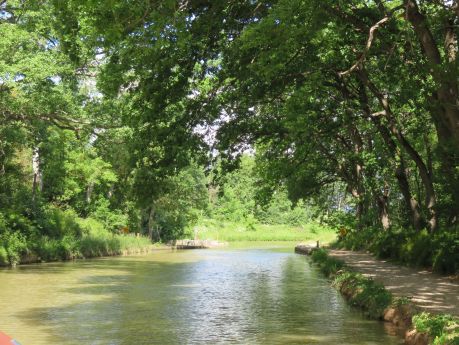

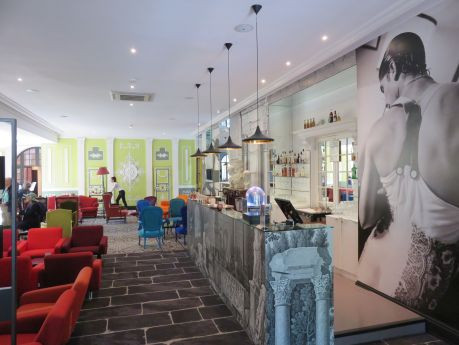



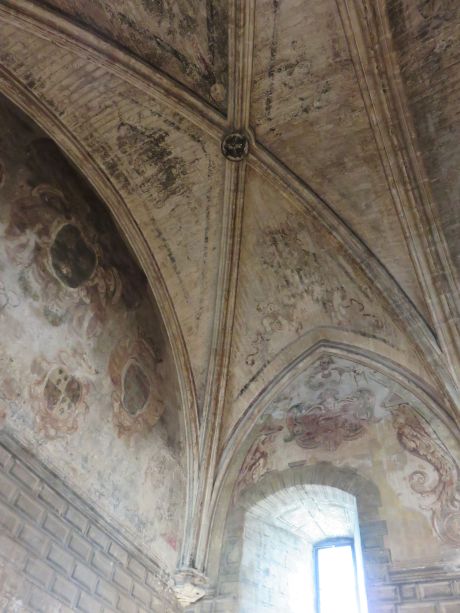

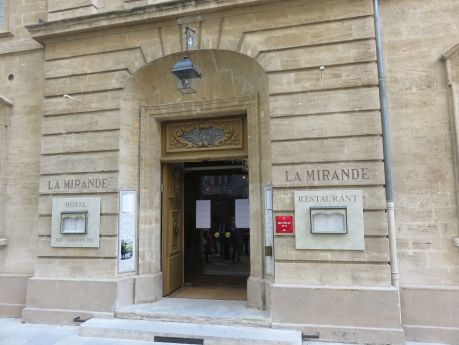


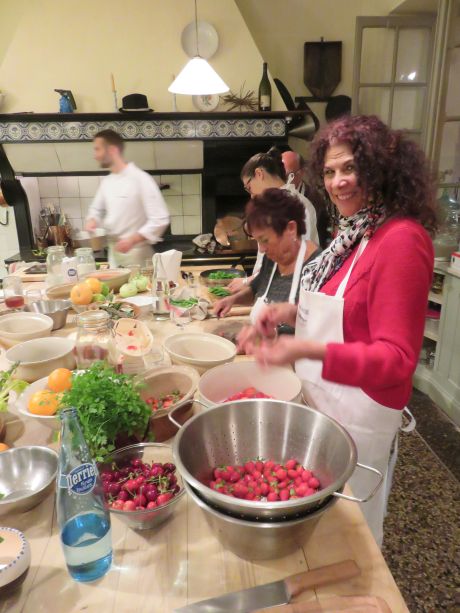

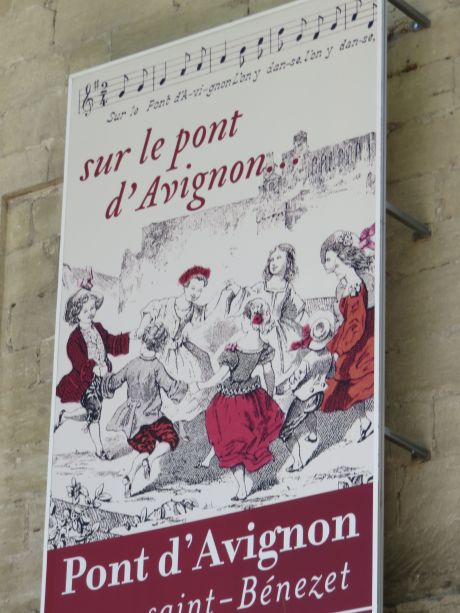

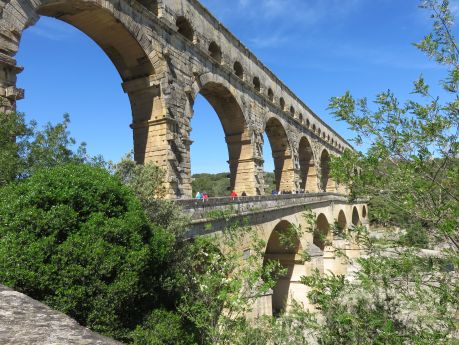
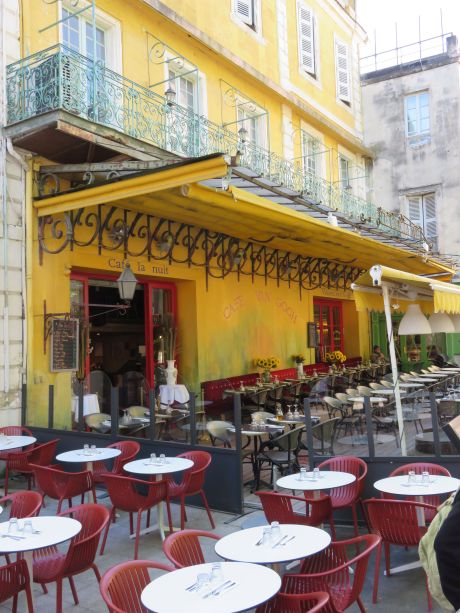
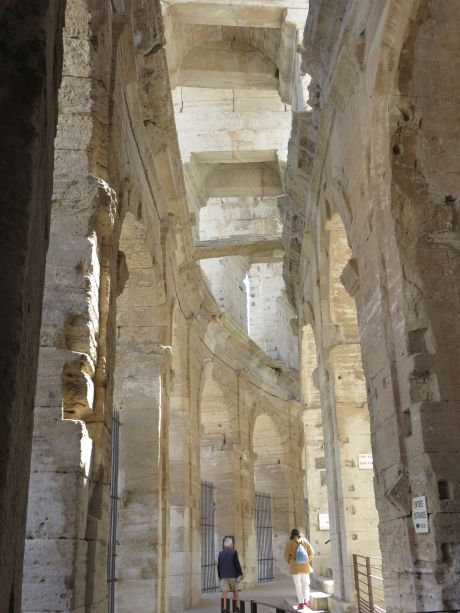
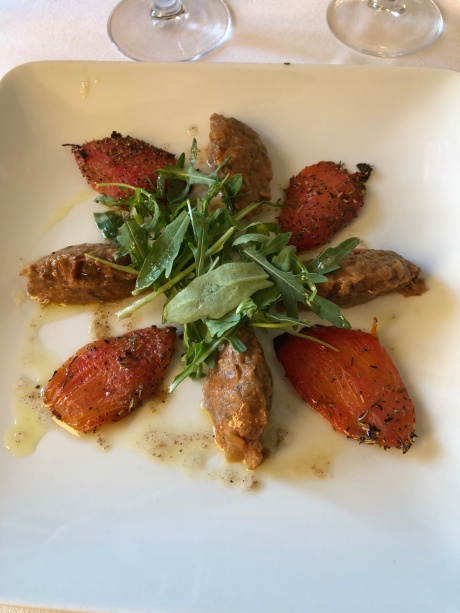
Trackbacks & Pingbacks
[…] Do you even need to ask how much wine we first tasted in the cellar and then drank during dinner? (https://karenkuzsel.com/2019/08/02/part-3-southern-french-connection-art-food-and-wine/) High on the Italian mountaintop medieval city of Orvieto, Chef Lorenzo Polage allowed me to slice […]
[…] Do you even need to ask how much wine we first tasted in the cellar and then drank during dinner? (https://karenkuzsel.com/2019/08/02/part-3-southern-french-connection-art-food-and-wine/) High on the Italian mountaintop medieval city of Orvieto, Chef Lorenzo Polage allowed me to slice […]
Leave a Reply
Want to join the discussion?Feel free to contribute!